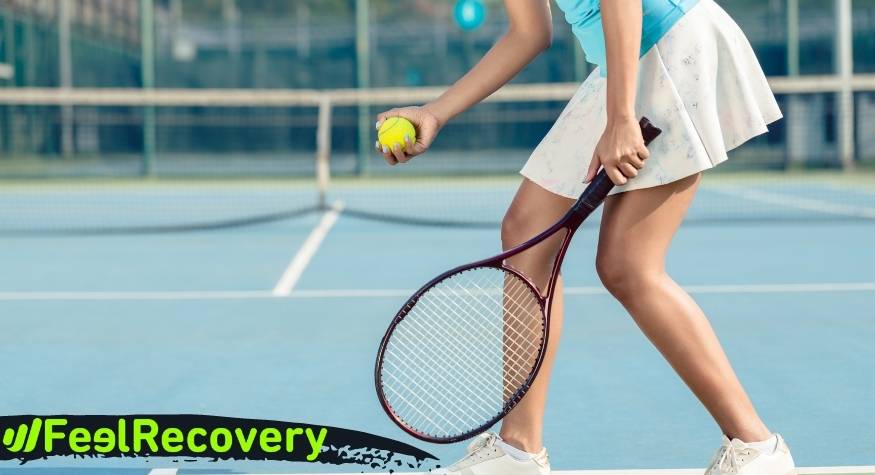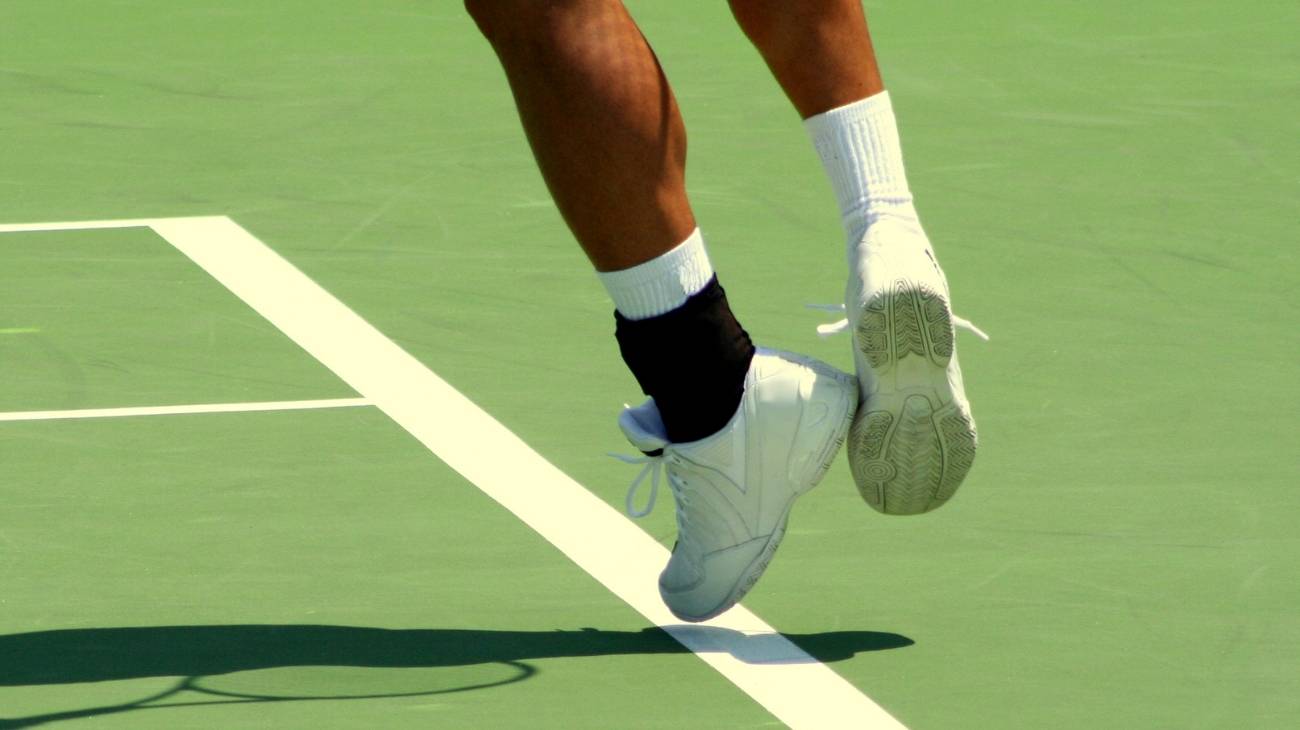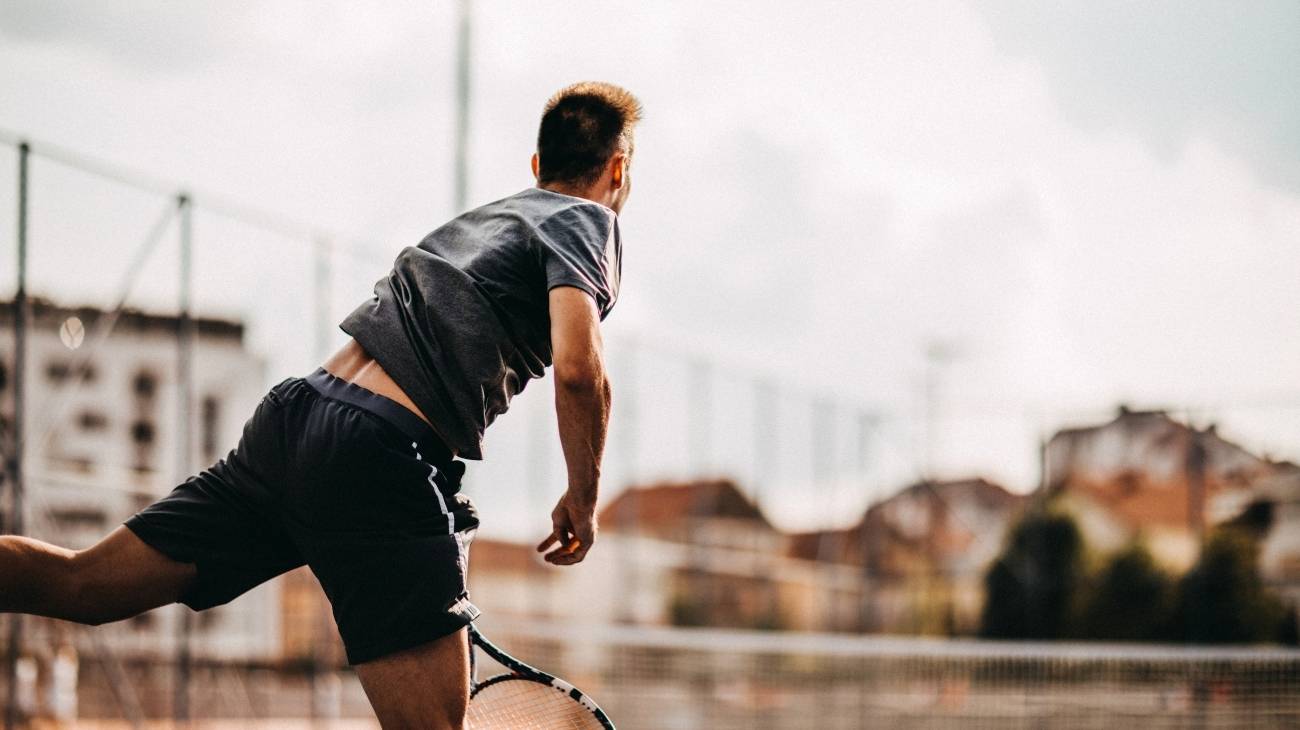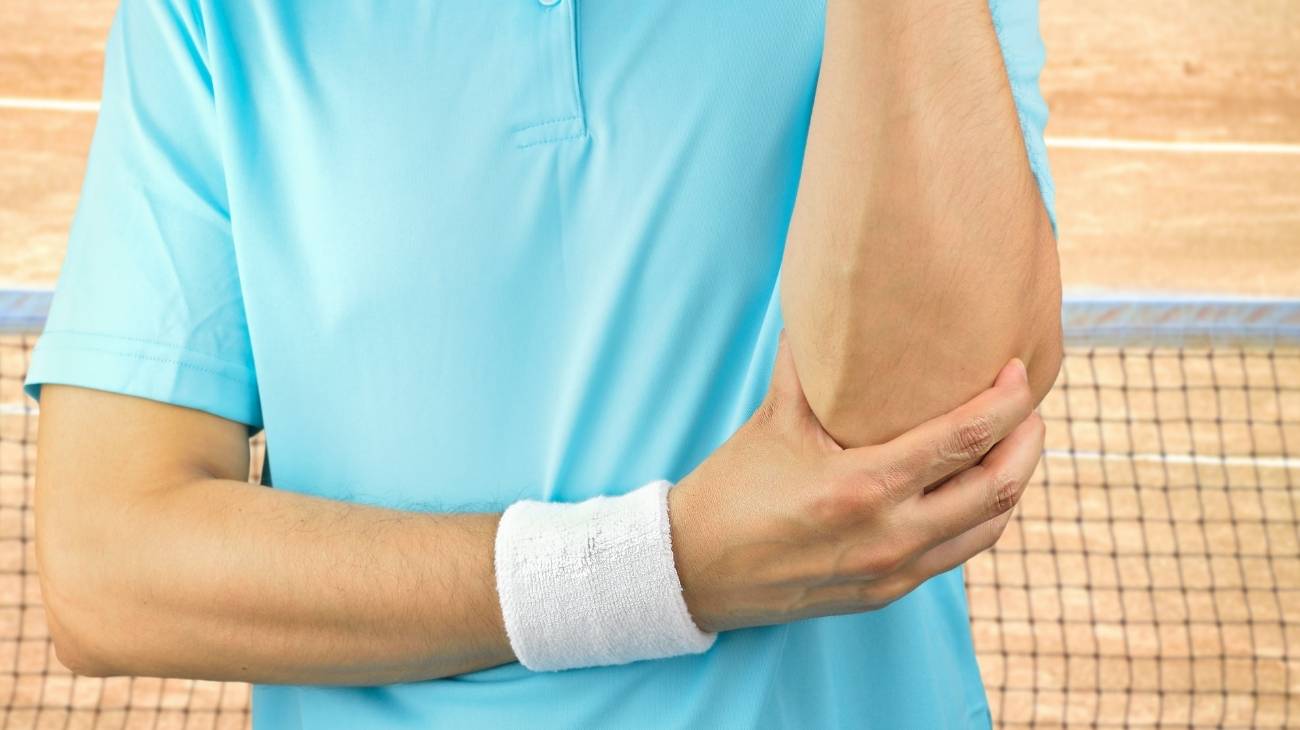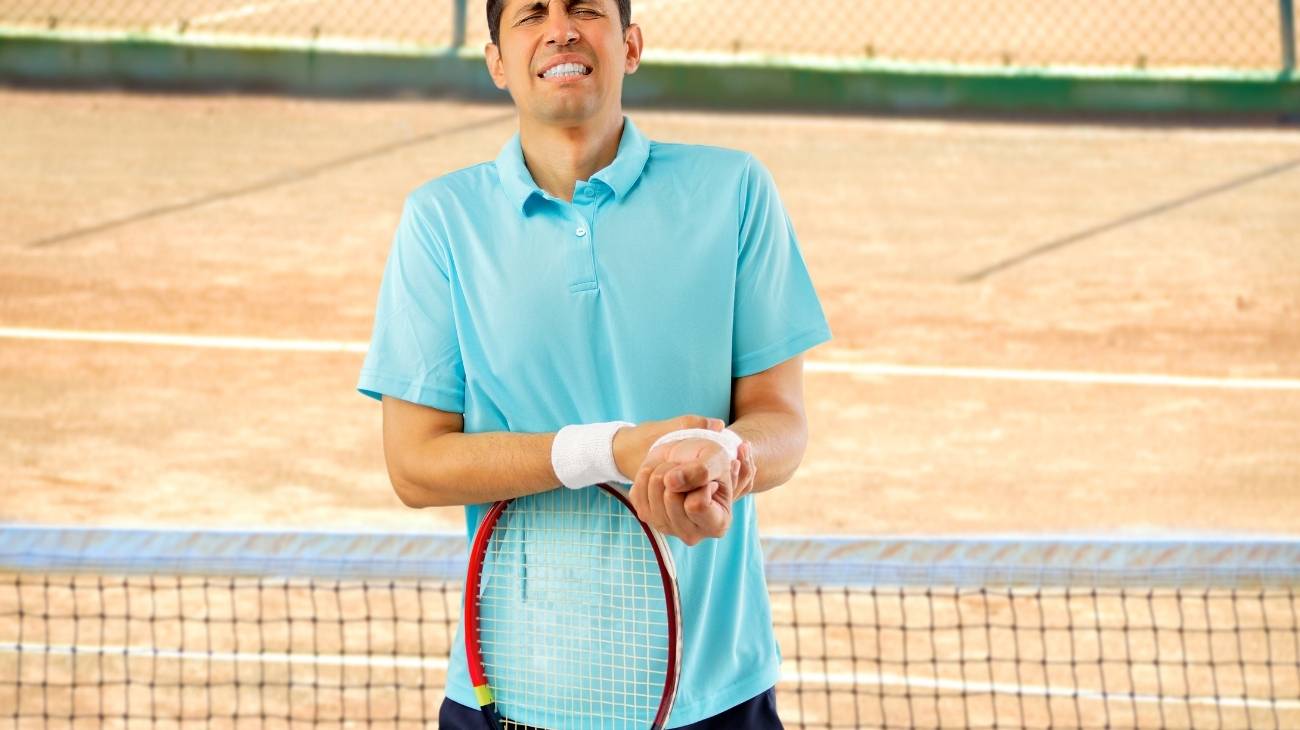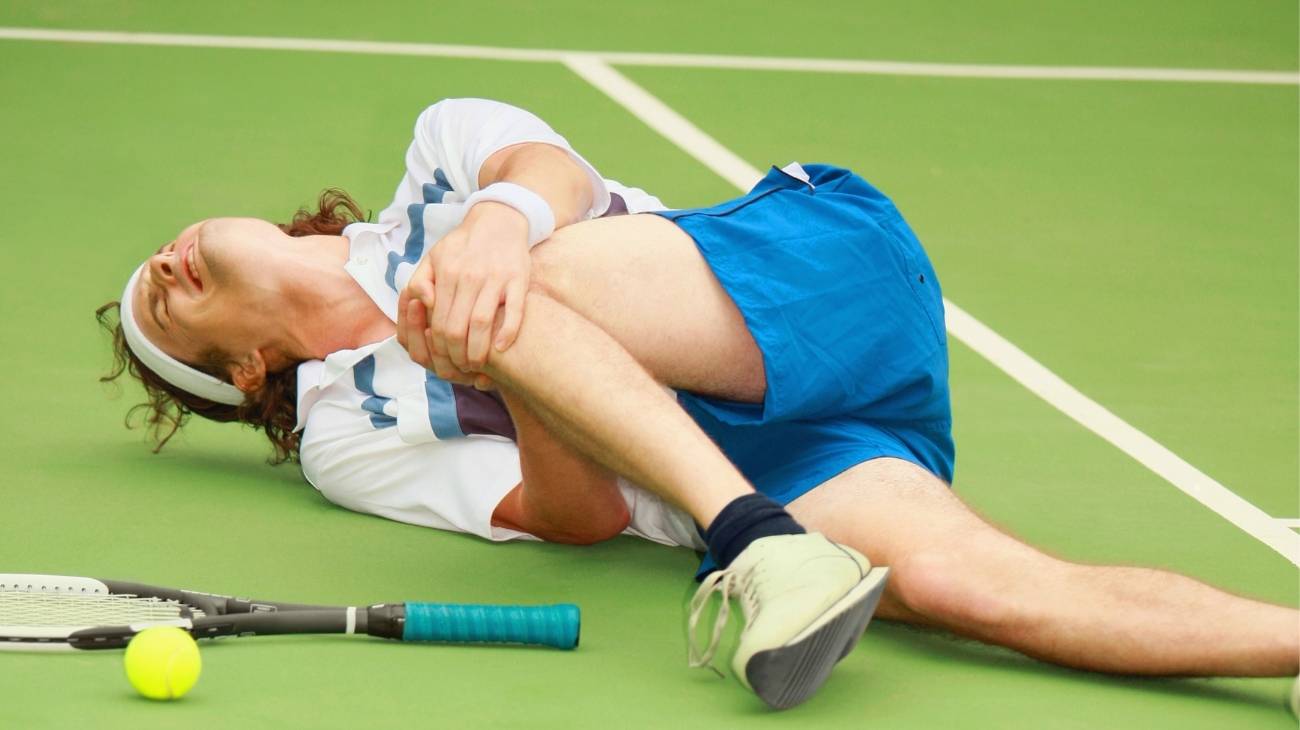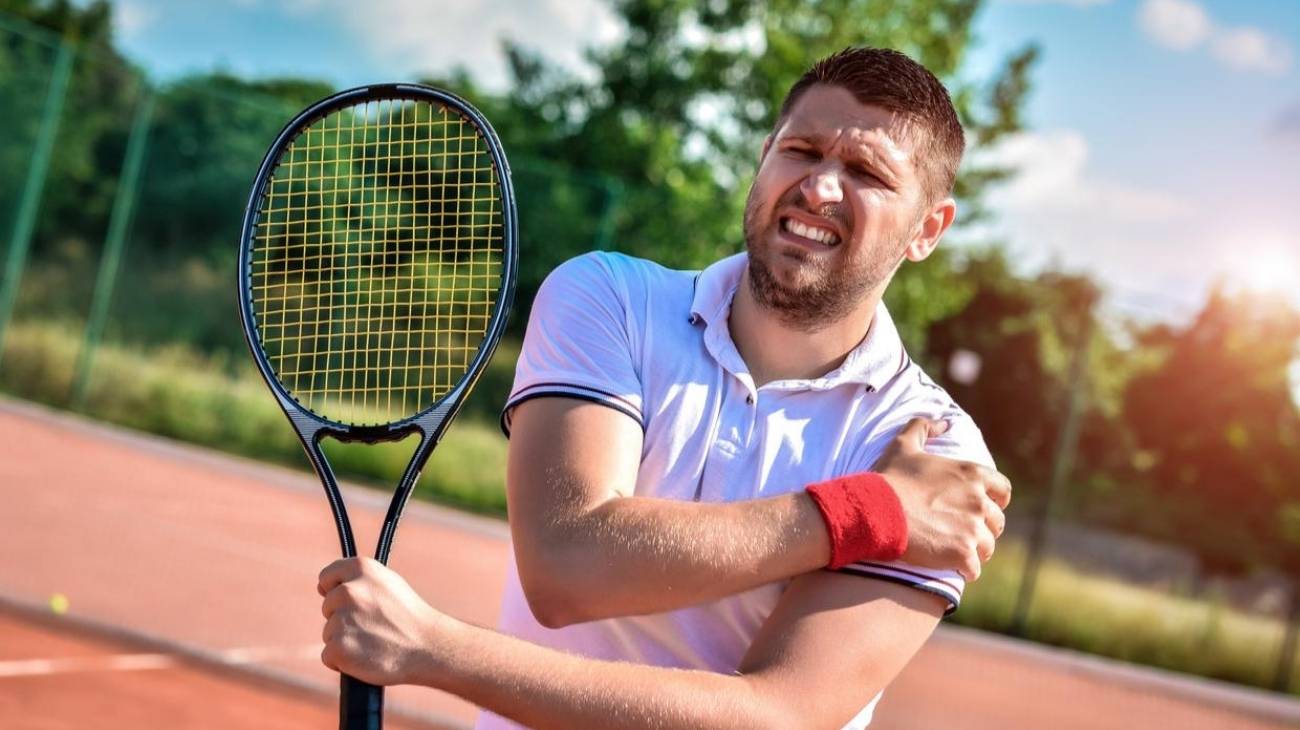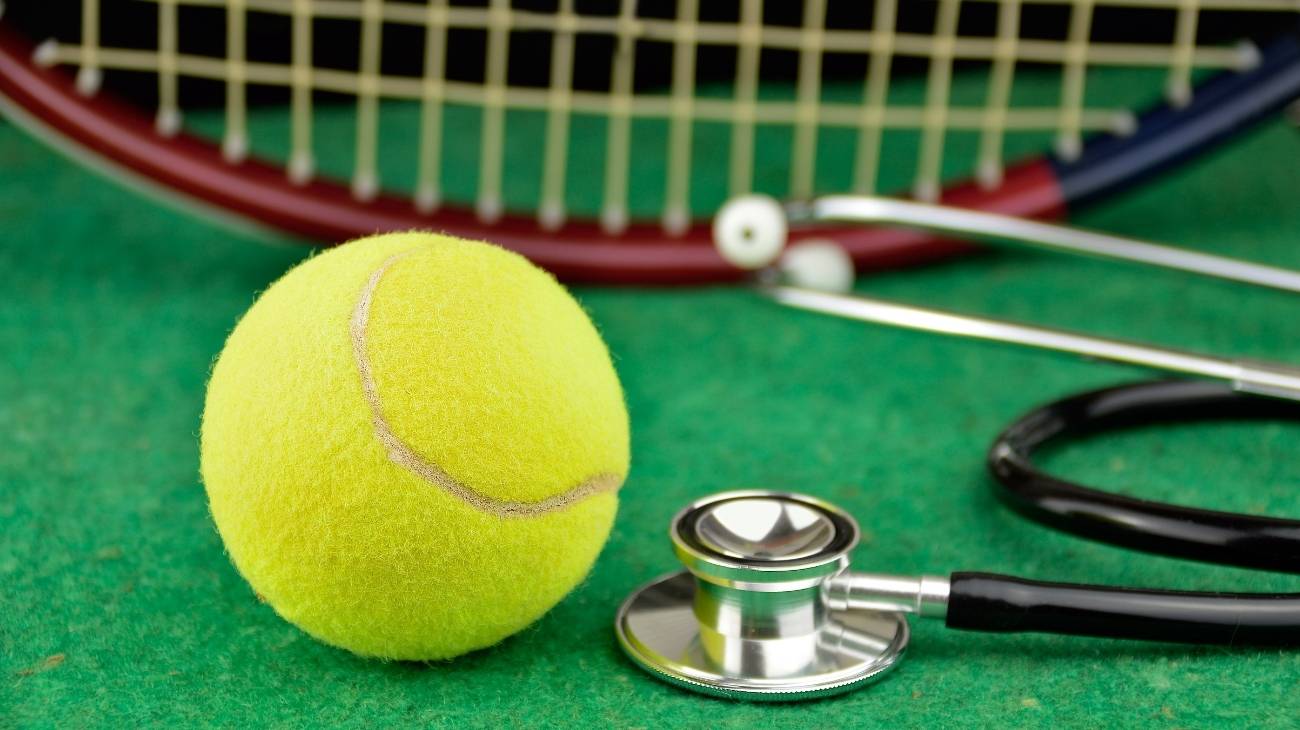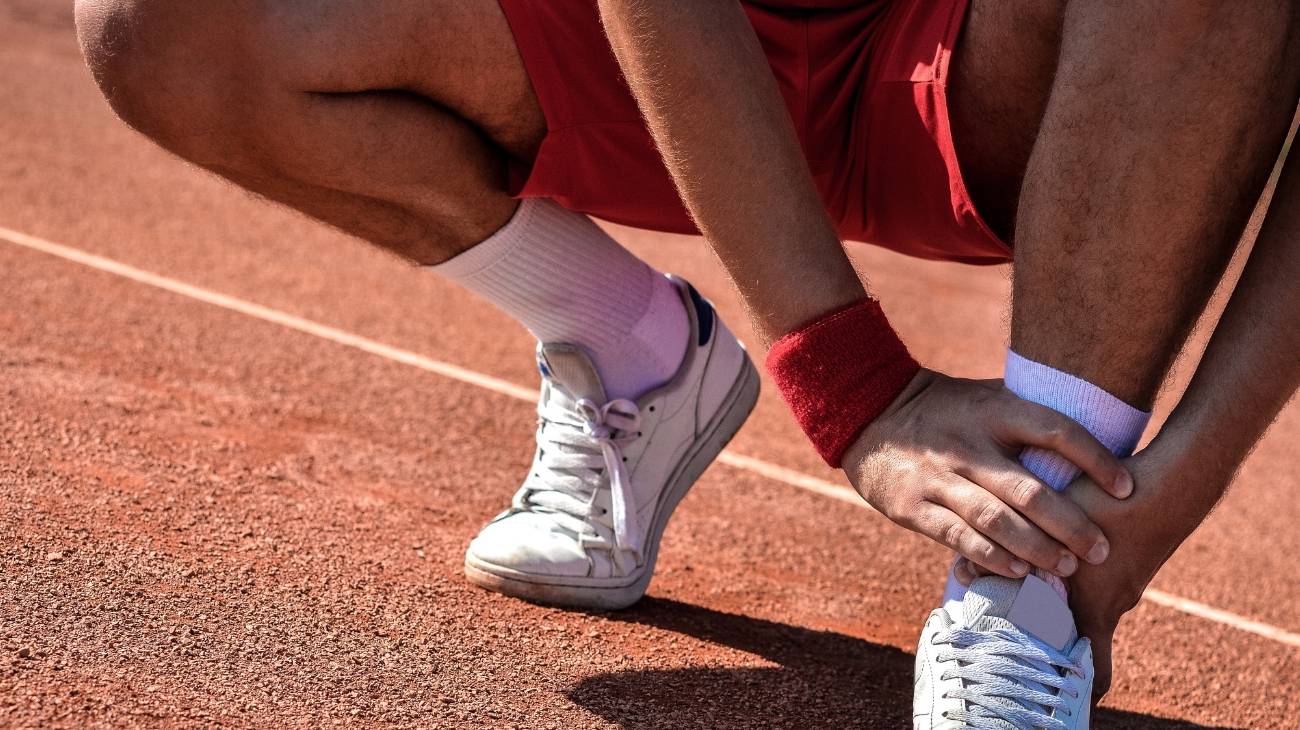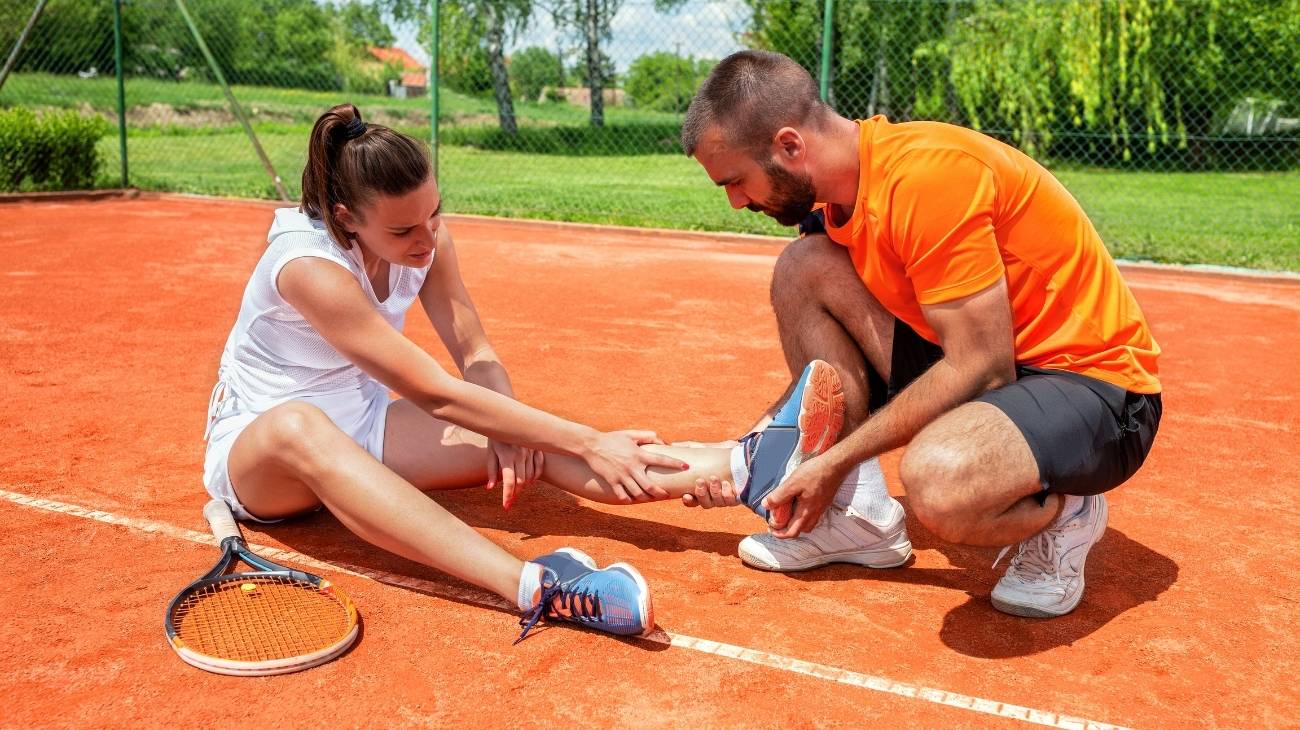Sports injuries to the knee in tennis occur frequently among both professionals and amateurs. The characteristic movements of this sport involving the leg can sooner or later damage this important joint.
In this opportunity we bring you a list of the main knee injuries in tennis. Stay with us and you will be able to find out what each one of them is about and why they arise in this sport. Also, we will show you some methodologies and products that you can use in the treatment of these conditions. Let's go!
What are the most common types of knee injuries when we play tennis?
The knee joint plays a key role in every tennis match. This racket sport involves constant movement from one side of the court to the other. To do this, tennis players continually need to make sudden stops, abrupt changes of direction, jumps and so on.
The result is usually knee injuries in tennis, either from excessive use or some traumatic event generated by making these movements. This joint is very complex, with different components that can be affected. Generally, the ligaments, cartilage and tendons present in it are among the most damaged.
Below, we show you the most common knee injuries in tennis:
Jumper's knee (patellar tendinopathy)
Also known as patellar tendinopathy, this injury consists of small tears over the patellar tendon. The latter is a connective tissue located in the knee that joins the kneecap to the tibia, allowing movements such as jumping, running and walking.
This pathology is usually caused by the excessive use of the knee. Therefore, it usually occurs in sports involving activities such as jumping, landing, running, speeding up and slowing down. The symptoms of this tendinopathy include: stabbing pain (especially with movement), stiffness and discomfort in the knee, right in the area of the patellar tendon.
Torn meniscus
In each knee there are two C-shaped pieces of cartilage called menisci. These generate cushioning and congruence at the junction between the femur and the tibia. Sometimes, these cartilages can tear partially or completely, which is known as a meniscus tear.
Typically this occurs when a strong movement of rotation and extension of the knee is made while the knee is holding the weight of the body. It often occurs in athletes in sports involving constant contact or pivoting. This pathology produces pain in the knee, especially when rotating it, as well as swelling and stiffness in the area. Also, it generates snapping and a feeling of failure in the knee.
Injury of the anterior cruciate ligament (ACL)
It consists of the tear or sprain of the anterior cruciate ligament (ACL), one of the most important ligaments in the knee. It can be stretched or torn (partially or completely) depending on the severity of the injury. In general, the symptoms are: loud noise, intense pain, inflammation, loss of range of motion and feeling of instability.
It is one of the most common sports injuries in tennis and other disciplines that demand pivoting, jumping and slowing down. It arises when stopping and/or changing direction suddenly. It can also be caused by a bad jump, turn, twist as well as by an impact on the front of the tibia.
Chondromalacia of the patella
Chondromalacia patella is an injury characterized by softening and breaking of the cartilage located on the back of the kneecap. This cartilage functions as a shock absorber between the femur and the kneecap. In the worst case this piece of cartilage deteriorates to the point that these bones rub directly against each other.
The aetiology of this pathology is generally associated with other injuries, excessive use or incorrect alignment of muscles and bones near the knee. It often occurs in athletes who exert constant pressure on this joint, especially in young patients. This injury causes anterior knee pain, which can be worse during activities such as climbing stairs, walking, running and squatting. It also causes stiffness and crackles when extending and flexing the knee.
Bursitis in the knee
It lies in the inflammation of one or more of the bursas present in the knee. A bursa is a small sac containing fluid whose main function is to reduce friction in joints. Although there are several of these bags in the knee and all of them can become inflamed, bursitis stands out over the pre-patellar, infra-patellar and goose leg bursa (pes anserinus).
In general, this pathology can be caused by constant pressure on the knee, excessive use, a blow to the area, a fall, infection or pre-existing conditions. In particular, bursitis of the pes anserinus bursa constantly occurs in sports that require constant side-to-side movement such as tennis. Usually, in these injuries the affected part presents: pain (when pressing, moving and even at rest), inflammation, sensitivity and warmth.
Knee arthrosis
This pathology involves the wearing away of the articular cartilage of the knee. The cartilaginous layers present in this joint reduce friction between the bones that make up the joint (femur, tibia and patella). When the articular cartilage wears away these bones can rub directly against each other causing knee pain, leg failure, swelling and stiffness in the area.
This pathology is believed to be caused by a combination of factors. On the one hand, it is more frequent in older people (50 years and over) because it is mainly of a degenerative aetiology. However, gradual injuries to the knee increase the risk of it arising, even in young people. In addition, the performance of activities involving constant pressure on the knee such as tennis is considered a risk factor. Obesity also increases the chances of suffering from this disease.
Dislocation and subluxation of the kneecap
Dislocation (dislocation) and subluxation (partial dislocation) of the kneecap are injuries that also often affect tennis players. They involve the displacement of the kneecap from its natural place, often to the side. The result is severe pain, swelling, instability and blockage of the knee.
The typical mechanism that produces them consists of a strong external tibial rotation keeping the foot on the ground. This type of movement is frequent in tennis, where it is vital to change direction very quickly. However, these injuries can also arise from blows to the knee.
Best products for recovery from tennis knee injuries
Bestseller
-
2 Knee Compression Sleeve (Black/Gray)
$19.95 -
2 Knee Compression Sleeve (Green/Navy)
$19.95 -
2 Knee Compression Sleeve (Pink/Bordeaux)
$19.95 -
2 Patella Knee Strap (Black/Gray)
$14.95 -
2 Patella Knee Strap (Green/Navy)
$14.95 -
2 Patella Knee Strap (Pink/Bordeaux)
$14.95 -
Heating Pad for Microwave Classic Bottle Shaped (Hearts)
$19.95 -
Heating Pad for Microwave Classic Bottle Shaped (Oxford)
$19.95 -
Heating Pad for Microwave Classic Bottle Shaped (Sport)
$19.95 -
Microwave Heating Pad for Back Pain Relief (Extra Large) (Hearts)
$29.95 -
Microwave Heating Pad for Back Pain Relief (Extra Large) (Oxford)
$29.95 -
Microwave Heating Pad for Back Pain Relief (Extra Large) (Sport)
$29.95 -
Microwaveable Heating Pad for Pain Relief (Hearts)
$19.95 -
Microwaveable Heating Pad for Pain Relief (Oxford)
$19.95 -
Microwaveable Heating Pad for Pain Relief (Sport)
$19.95
How to apply RICE therapy to treat knee injuries in tennis players?
The RICE protocol is a healthcare methodology used in the treatment of injuries. Its name is derived from the union of the initials rest, ice, compression and elevation. Each of these four words corresponds to one of the steps to be followed in the performance of this therapy.
There are other methodologies in addition to this one, such as PRICE. This is an update of RICE that adds an extra step: Protection. However, RICE therapy is more well known.
Below, we explain each of the steps in the PRICE protocol:
- Protection: This first step is intended to safeguard the integrity of the patient, especially by protecting the injured area. It will of course be necessary to suspend the sporting activity. In addition, the affected area will have to be immobilised using a sling, joint support, orthosis, among others.
- Rest: In this step the patient must rest, which is vital for recovery from the injury. However, safe movements are recommended as total immobilisation can cause stiffness. This rest period should generally last 48 hours.
- Ice: At this stage you should apply cryotherapy to the affected area to achieve a considerable decrease in swelling and pain. Basically you should place a cold pack with a temperature between 10 and 20 °C on the injured area. This can be done for periods of 20 minutes about 6 or 8 times a day. Do not exceed the time indicated as it could be harmful.
- Compression: Applying pressure properly to the injury gives firmness and stimulates circulation, reducing inflammation. At this stage it is usual to use a tissue with some elasticity (which allows non-injurious movements) to bandage the affected area. You must tighten the bandage but not too much, as it could cut off the circulation.
- Elevation: Finally you must raise the injured area to a level above the heart. This will promote the return of blood to the heart, contributing to the deflation and relief of pain. A pillow is perfect as a support surface in this step.
References
- Gecha, S. R., & Torg, E. (1988). Knee injuries in tennis. Clinics in sports medicine, 7(2), 435-452. https://europepmc.org/article/med/3292070
- Renström, P. A. (1995). Knee pain in tennis players. Clinics in sports medicine, 14(1), 163-175. https://www.sciencedirect.com/science/article/abs/pii/S0278591920302635
- Martin, C., Sorel, A., Touzard, P., Bideau, B., Gaborit, R., DeGroot, H., & Kulpa, R. (2021). Influence of the forehand stance on knee biomechanics: Implications for potential injury risks in tennis players. Journal of sports sciences, 39(9), 992-1000. https://www.tandfonline.com/doi/abs/10.1080/02640414.2020.1853335
- Colvin, A. C., & Andelman, S. M. (2016). Tennis Injuries of the Hip and Knee. The Young Tennis Player: Injury Prevention and Treatment, 183-201. https://link.springer.com/chapter/10.1007/978-3-319-27559-8_10
- Thelin, N., Holmberg, S., & Thelin, A. (2006). Knee injuries account for the sports‐related increased risk of knee osteoarthritis. Scandinavian journal of medicine & science in sports, 16(5), 329-333. https://onlinelibrary.wiley.com/doi/abs/10.1111/j.1600-0838.2005.00497.x
- Kibler, W. B., & Safran, M. (2005). Tennis injuries. Epidemiology of Pediatric Sports Injuries: Individual Sports, 48, 120-137. https://www.karger.com/Article/Abstract/84285
- Pluim, B. M., Staal, J. B., Windler, G. E., & Jayanthi, N. (2006). Tennis injuries: occurrence, aetiology, and prevention. British journal of sports medicine, 40(5), 415-423. https://bjsm.bmj.com/content/40/5/415.short
- Dines, J. S., Bedi, A., Williams, P. N., Dodson, C. C., Ellenbecker, T. S., Altchek, D. W., … & Dines, D. M. (2015). Tennis injuries: epidemiology, pathophysiology, and treatment. JAAOS-Journal of the American Academy of Orthopaedic Surgeons, 23(3), 181-189. https://journals.lww.com/jaaos/Fulltext/2015/03000/Tennis_Injuries__Epidemiology,_Pathophysiology,.6.aspx
- Nigg, B. M., & Segesser, B. (1988). The influence of playing surfaces on the load on the locomotor system and on football and tennis injuries. Sports medicine, 5, 375-385. https://link.springer.com/article/10.2165/00007256-198805060-00003
- Bylak, J., & Hutchinson, M. R. (1998). Common sports injuries in young tennis players. Sports medicine, 26, 119-132. https://link.springer.com/article/10.2165/00007256-199826020-00005

